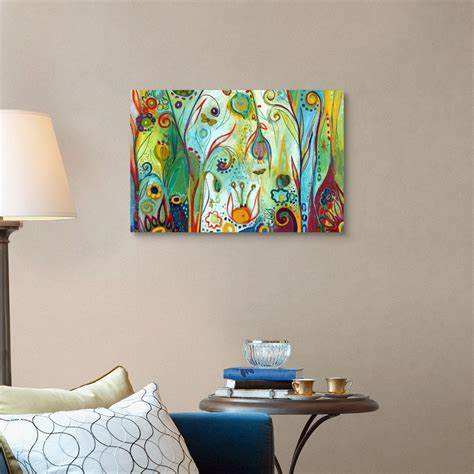In the contemporary digital landscape of business networking and marketing, one might wonder if the traditional business card still holds any significance. The resounding answer is yes. In fact, the business card remains an invaluable asset, a tangible representation of your professional identity that can leave an indelible mark on potential clients and partners. In this comprehensive guide, we will explore the profound importance of business cards and equip you with an in-depth understanding of how to create business cards that transcend the ordinary and forge lasting connections.
The Enduring Value of Business Cards
In the realm of modern business, where virtual interactions dominate, the business card continues to hold a unique and vital role. Here’s why business cards remain indispensable:
1. A Memorable First Impression:
In the sea of virtual exchanges and digital profiles, a well-designed business card stands out as a physical representation of your brand. It serves as a powerful and tangible first impression, setting the stage for meaningful and productive professional relationships.
2. Human Connection:
Despite the convenience of digital communication, nothing quite matches the impact of a face-to-face encounter. The exchange of business cards fosters a personal connection, making meetings more memorable and relationships more authentic.
3. Professionalism Personified:
A meticulously crafted business card radiates professionalism and attention to detail. It communicates your commitment to presenting a polished image, which can significantly bolster the trust and confidence of potential clients or partners.
4. Convenience in Hand:
Business cards are compact and easily fit into wallets or pockets, ensuring that your contact information is readily accessible when needed. This convenience can be a game-changer in fast-paced business environments.
Crafting Business Cards That Speak Volumes
Now that we’ve established the enduring importance of business cards, let’s delve into the intricate art of designing and creating business cards that go beyond the mundane and truly captivate your audience.
1. Clarity and Conciseness:
The primary function of a business card is to deliver essential contact information. Include your name, job title, company name, phone number, email address, and website URL (if applicable). Ensure that the text is clear, legible, and employs a professional font.
2. Meticulous Material Selection:
Your choice of cardstock speaks volumes about your commitment to quality. Opt for thicker, premium cardstock that exudes substance and durability. Additionally, consider different finishes like matte, gloss, or satin, aligning your choice with your brand’s aesthetics.
3. Creative Branding:
Your business card is an extension of your brand. Infuse it with your company’s color scheme, logo, and design elements to establish a cohesive and visually striking card. Consistency in branding reinforces brand recognition and makes your card memorable.
4. Unique Shapes and Sizes:
While the standard rectangular card is ubiquitous, don’t be afraid to experiment with unique shapes and sizes. Die-cutting technology enables the creation of cards in various forms, setting you apart from the ordinary while ensuring that the card still fits comfortably in standard cardholders.
5. Engaging Imagery:
Images and graphics can amplify the visual appeal of your business card. Utilize visuals that resonate with your industry or showcase your products or services. Prioritize high-quality images that convey the intended message effectively.
6. The Elegance of Minimalism:
Simplicity often speaks volumes. A clean, minimalist design can sometimes be more powerful in conveying your message. By avoiding clutter and focusing on key elements, you ensure that your card remains easy to read and comprehend.
7. QR Codes and Digital Integration:
Embrace modern technology by incorporating QR codes into your business card. These codes can link to your website, portfolio, or LinkedIn profile, allowing for seamless digital integration without compromising the classic charm of a physical card.
8. Texture Matters:
Texture can be a powerful element in crafting a memorable business card. Techniques like embossing, foil stamping, or letterpress printing add tactile depth, inviting recipients to touch and engage with your card.
9. Double-Sided Brilliance:
Maximize the utility of your business card by utilizing both sides. Reserve one side for vital contact information and dedicate the other to additional details, such as a concise company slogan or a list of services offered.
10. Proofread Diligently:
Before sending your design to the printer, meticulously proofread all text for accuracy and grammar. A single typo or error can tarnish your professionalism and leave a negative impression.
The Canvas of Printing Possibilities

With your meticulously designed business card in hand, the next step is to choose the right printing method to bring your vision to life. Let’s explore some popular printing techniques:
1. Offset Printing:
Offset printing delivers consistent, high-quality results, making it ideal for larger print runs. This method employs inked plates to transfer the design onto the cardstock, resulting in sharp and vibrant colors.
2. Digital Printing:
Digital printing shines when it comes to smaller print runs. It offers quick turnaround times and accommodates designs with variable elements, such as individual names or images. While it may not match offset printing’s color accuracy, it proves reliable for most business card projects.
3. Letterpress Printing:
If you’re aiming for luxury or high-end business cards, letterpress printing can add a touch of sophistication. It creates a distinctive tactile effect by pressing the design into the cardstock, leaving a lasting impression.
4. Silk Laminated Cards:
Silk laminated cards boast a smooth, matte finish that not only looks luxurious but also feels delightful to the touch. They are durable and resistant to wear and tear, making them a practical choice.
5. Foil Stamping:
Foil stamping adds a metallic or holographic finish to specific design elements on your card, creating a captivating contrast and drawing attention to key details.
6. UV Coating:
UV coating involves adding a shiny, protective layer to your business card, giving it a glossy and professional appearance. It also enhances the card’s durability.
7. Recycled and Eco-Friendly Options:
If sustainability is a core value of your brand, explore recycled or eco-friendly materials for your business cards. Many printing companies offer environmentally responsible options that align with green business practices.
The Art of Networking with Business Cards
With your impeccably designed and printed business cards in hand, it’s time to employ them effectively in networking. Here are some advanced strategies for networking prowess:
1. Always Be Prepared:
Carry a generous supply of business cards with you at all times. Networking opportunities can arise unexpectedly, and you don’t want to miss a chance to make a connection.
2. Strategic Card Exchange:
Timing is crucial when it comes to exchanging business cards. Offer your card when the conversation reaches a point of genuine interest in further communication. Use it as a catalyst to facilitate a deeper connection.
3. Respect Recipients’ Cards:
When you receive a business card from someone else, handle it with care and respect.
Take a moment to inspect the card, acknowledge the person’s information, and express gratitude for the exchange.
4. Include Personal Notes:
Particularly during busy networking events, it can be challenging to remember the context of each encounter. Consider jotting down a brief note on the back of the card to remind yourself of the conversation or any follow-up actions required.
5. Timely Follow-Up:
After the event or meeting, promptly follow up with the individuals you exchanged cards with. Send personalized emails or messages to express your interest in continuing the conversation or exploring potential collaborations.
6. Maintain Professionalism:
Treat business cards with the utmost professionalism. Avoid writing on them unless necessary, and never fold or crease someone else’s card. Each card is a valuable connection; treat it as such.
Going Above and Beyond: Advanced Business Card Strategies
While the strategies discussed so far are effective for creating impressive business cards and leveraging them in networking, there are further advanced tactics that can set you apart:
1. Interactive Elements:
Elevate your business card’s engagement factor by incorporating interactive elements. QR codes can lead to exclusive content, such as product demos, promotional videos, or informative blog posts. By offering added value, you make your card more compelling and unforgettable.
2. Die-Cutting and Specialty Shapes:
Beyond the standard rectangular card, explore die-cutting options to create unique shapes or designs. Specialty shapes, such as circular or square cards, make your card stand out while retaining functionality.
3. Texture and Materials:
To make your business card truly memorable, consider materials beyond traditional cardstock. Wood, metal, or plastic can create a unique tactile experience. Techniques like embossing, debossing, or letterpress printing add depth and interest.
4. Minimalistic Elegance:
Sometimes, less is more. Embrace minimalistic elegance with judicious use of negative space. A well-placed logo, subtle background texture, or a single striking image can convey sophistication and class.
5. Dual-Purpose Cards:
Make your business card more than just a contact information holder. Let it serve a practical purpose, such as doubling as a mini-calendar, ruler, or a handy conversion chart relevant to your industry. A card that offers utility is more likely to be retained and used.
6. Personalized Cards:
Tailor your business cards to individual recipients. If your business offers various products or services, create multiple versions of your card, each highlighting a specific offering. This personalized approach demonstrates your commitment and makes the recipient feel valued.
7. Branded Packaging:
Elevate the presentation of your business cards with branded packaging. Custom envelopes, sleeves, or boxes add to the perceived value of your card and create a sense of anticipation during the exchange.
8. Augmented Reality (AR):
Incorporate augmented reality technology into your business card. AR apps can create interactive experiences when recipients scan the card, including 3D animations, product showcases, or immersive storytelling that captivates and impresses.
9. Sustainability and Eco-Friendliness:
Consider eco-friendly options for your business cards to align with sustainability trends. Opt for recycled materials, soy-based inks, or biodegradable finishes. Promoting your eco-conscious choices can enhance your brand’s reputation.
10. Social Media Integration:
Include your social media profiles on your business card. This allows recipients to connect with you on various platforms, expanding your online presence and enabling ongoing engagement.
11. Testimonials or Reviews:
Incorporating a brief testimonial or quote from a satisfied client adds credibility and builds trust. Ensure you obtain permission from the source and keep the text concise to maintain card readability.
12. Multilingual Cards:
If you operate internationally or within diverse communities, consider creating multilingual business cards. This demonstrates inclusivity and facilitates communication with a broader audience.
13. NFC Technology:
Harness the power of Near Field Communication (NFC) technology, allowing data transfer when the card is tapped against a compatible device. This simplifies contact exchange and adds a technological edge to your card.
14. Personal Branding:
Your business card should not merely represent your company; it should embody your personal brand. Consider adding a brief personal statement or tagline that encapsulates your professional ethos and distinguishes you from competitors.
15. A/B Testing:
Continuously refine your business card design by conducting A/B testing. Create multiple versions with subtle variations, distribute them, and track which one yields the best results in terms of engagement and follow-up.
A Masterpiece in Your Pocket

In a world where digital networking often dominates, a well-designed, thoughtfully crafted business card retains its potency as a tangible catalyst for forging profound professional connections. By embracing advanced design and printing techniques, combined with strategic networking practices, your business cards can become powerful artifacts that not only open doors to new opportunities but also leave an enduring legacy of your brand and identity.
As you embark on your journey to create business cards that transcend the ordinary, remember that the most effective business cards strike a balance between creativity and functionality. While it’s essential to make your card visually striking, it should always serve its primary purpose—facilitating communication and fostering relationships. Therefore, embrace innovation, experiment with advanced strategies, and continuously refine your business cards to ensure that they remain invaluable assets in your professional repertoire, capable of leaving a lasting impression that resonates long after the handshake.
